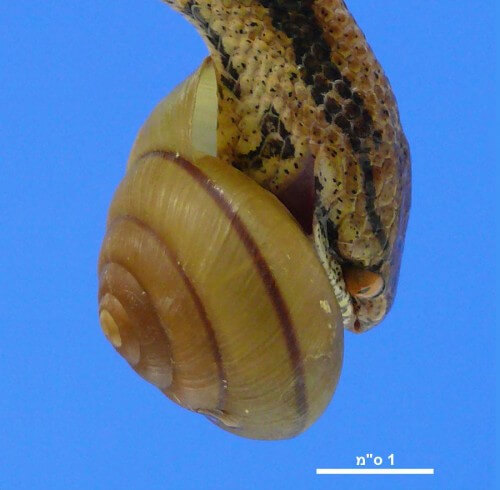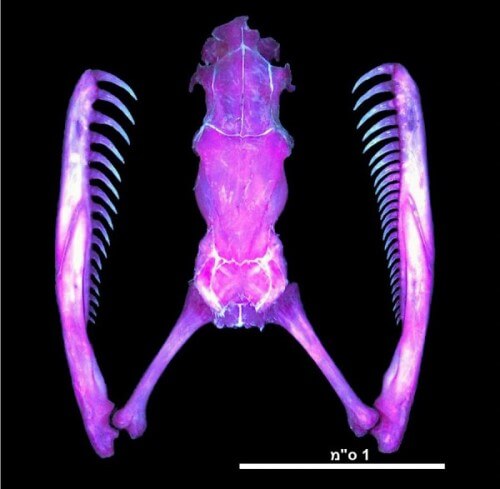Snails that have developed a shell that curls to the left side are more protected from their natural predator
Yonat Ashhar and Noam Levithan Galileo

What happens when a change in a single gene alters the form of a real change organism, to the point that mating with another individual of its species, which has not undergone the change, becomes almost impossible? In most cases, the mutant individual will die without leaving offspring, and the mutation will become extinct. But such a change happened several times in Satsuma type snails (Satsuma), and the mutant snails are far from disappearing and may be on the way to the establishment of a new species.
Satsuma snails, which are common in East Asia, have a spiral-shaped shell, most of them winding clockwise. These snails are called right-handed. In some of them, the spiral twists in the opposite direction (left-handed snails), a change that originates as mentioned in a single gene. In addition to the shape of the shell, the reversal of direction also affects the position of the reproductive organs, making mating between a right-handed snail and a left-handed snail a particularly complicated business. Why does the minority still manage to exist and prosper? Masaki Hoso of Tohoku University and his colleagues in Japan and Taiwan presented a possible answer to this question in an article published in the online journal Nature Communications..
The answer is less about snails and more about snakes. guess Prias Ivski (Pareas iwasakii, "a type of snake named after Ivski") There is another, simpler name - snail-eating snake. He got his name, not surprisingly, from the fact that he eats snails. Not sometimes, not in addition to a varied diet, but this snake is a professional and specializes exclusively in hunting his favorite delicacy. He grabs the snail from the side, holds the shell with the upper jaw and inserts the lower jaw, which is made of two parts, into the gap between the shell and the snail. By moving the parts of the lower jaw relative to each other, it manages to pull its prey out.
This method works perfectly as long as it is about right-handed snails, which as mentioned are more common. In fact, when the researchers gave the snakes such snails, they devoured them all without a problem:
http://www.youtube.com/watch?v=JxzpzrRgahE
In contrast, when the snakes faced snails with an inverted spiral, 87.5% of the snails survived the attack:
http://www.youtube.com/watch?v=LV9d_JOrjaY

why? One reason is that the snakes persisted in attacking from the left side, which is ineffective in the case of left-handed snails. But even if the snakes learn to change their behavior, their anatomy itself is adapted to attack from one side only. Their lower jaw is equipped with sharp teeth that point backwards, for digging into the flesh of the snail, but on the right side there are many more teeth. This allows them to devour right-handed snails with deadly efficiency, but is not very effective against left-handed snails.
Is the fact that left-handed snails are relatively protected from predation the reason they continue to thrive, despite reproductive isolation from their right-handed brethren? To test this, the researchers mapped the distribution of the snails throughout Japan, and saw that in the areas where the snail-eating snakes were found, a high percentage of left-handed snails was also found. Genetic analysis of the different species of snails shows that species with a left-handed spiral evolved from six different species of right-handed snails of the same genus.
It is commonly thought that the creation of new species requires a slow accumulation of genetic changes, until finally a daughter population is created that is so different from the mother population that it cannot breed with it. But in Satsuma snails, the reproductive barrier was created with the help of a mutation in only one gene - a mutation that also gave them a survival advantage. It seems that right now, the left snails are splitting off from the right snails and creating new species. And what about the snakes? Time will tell if they will be able to adapt to the change, and develop the ability to prey on left-handed snails as well - and perhaps, as a result, new species will be created among them as well.
The original article:
Hoso, M., Kameda, Y., Wu, SP, Asami, T., Kato M. & Hori M. A speciation gene for left-right reversal in snails results in anti-predator adaptation. Nat. Commun. 1, 133 (2010). doi: 10.1038/ncomms1133
The original article was published inSciPhile blog and in Galileo magazine issue 150, February 2011

4 תגובות
A. Ben Ner
As I wrote - apparently the mutation is not that rare, so that occasionally couples do succeed in reproducing.
This also explains why there are still few of them, because the mutation is not too common, and the survival advantage is not particularly significant either.
A possible reason for the ratio between right-handed and left-handed is history - it is possible that in the past snakes did not have a preference for left-handed snails. A mutation in these snakes caused a change in the jaw that you see in the picture, and this may not have happened long ago.
There is always a problem in evolution to understand why the situation today is like this. Sometimes natural selection is the reason, sometimes sexual selection, sometimes genetic drift and there are other reasons.
for miracles,
Your answer to Oren does not answer the problem he presented and it is: how did the first left mutant breed. After all, since he was first, then he was necessarily unique. Therefore the answer to Oran can be one of two:
1]. The first mutant, being single, was unable to reproduce and died without producing offspring.
2]. He managed, with a small but greater than zero chance, to mate with a right-handed mutant, and together they produced offspring, some of which were left-handed and some of which were right-handed.
3]. The question still stands:
Why are there more right-handed than left-handed snails?
Does right-handedness also provide any advantage in the ability to reproduce, which even covers up the other exposure of the right-handed to predators?
Pine
The explanation is simple and is described in the interesting article. This mutation is not so rare, so there is a good chance that left-handed spouses will indeed meet.
I didn't understand, once the first snail in the population mutated and became a shell with a left spiral, how did he find a suitable partner to mate with? After all, until that moment all the other female snails did not fit.
What's the solution ?